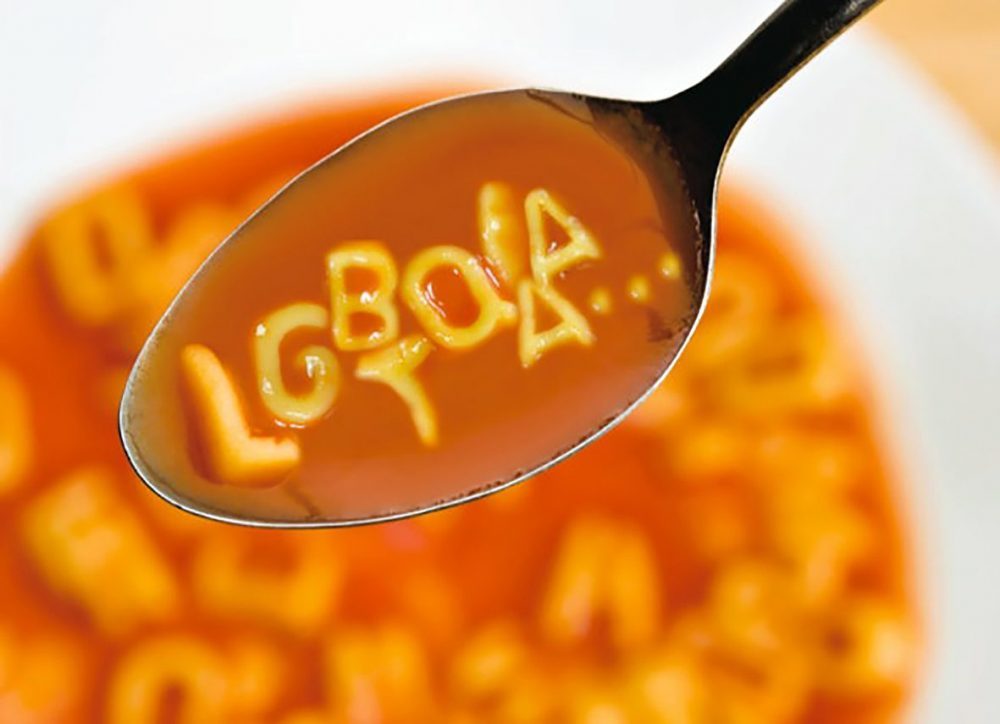Is there such thing as too many letters in our acronym?
What was once a simple, four-letter acronym that rolled off the tongue has nearly doubled, adopted a plus sign, and nobody can agree which acronym is the ‘right’ one anymore. So what’s the deal with ‘LGBTQIA+’. Why is it so long? Should it be? And why is the word ‘queer’ so divisive?
The exploration of gender and sexual identity is like anything. The more you look, the more there is to see. Globalisation, media, and technology allow us to connect more than ever with people like ourselves, regardless of geographical proximity. Identities and preferences that once were viewed as variations have solidified into their own entities. It’s like a nationality. All Australians are Australian. But within a country there are states, cities, towns, and neighbourhoods. Each with their own cluster of traits. Style, preference, behavioural codes. We might all be queer (or LGBTQIA+, or rainbow people, or whatever you prefer) but inside of that, we define ourselves and identify with each other numerous ways which deserve to be recognised.
Representation is important. We all know it. Particularly for those who cannot be open about it, simply knowing there are others like you can be a great comfort. When there’s something about yourself that isn’t like the people around you, finding out there’s a name for who and what you are can be comforting.
From my own experience, the letters in the acronym I identify with are valuable. They are dear to me, helping to give formal specificity to my identity. I value the word queer because I don’t always feel like sharing the nuances of myself with someone.
‘Queer’, for me, encompasses not only my current sexual preferences and gender identity, but all the ones I’ve ever considered, toyed with, applied to myself even for a short amount of time. In one word, it encompasses everything I am and was – without giving away any details.
It’s like saying ‘I am Australian’, without giving away my exact home address. Because it’s not always simple, and it’s not something you always want to share. That being said, ‘queer’ alone is insufficient. Because if ‘queer’ just means ‘not straight and/or not cis’ – I am so much more specific than that.
A dear friend of mine, Dani Weber (aka Dani Boi) summed it up beautifully: “There’re as many letters as there are people. Labels are nothing to be scared of. They needn’t be seen as defining or dividing us, they’re simply ways to help promote more understanding in a world that tries to erase who we are. The acronym will always keep growing, and I think it showcases the beauty and diversity of our community. I like how we can put a ‘+’ at the end of the acronym to denote that there’s so much more, and we can always be more aware and inclusive.”
Minding Our P’s and Q’s
The ‘T’ was added to the all-encompassing ‘gay’ when Pride marches in the US started actively excluding trans people. So I understand why gender and sexuality became conflated in our identifier. I’m not so sure they should remain lumped together though. I don’t doubt gender and sexual identity to be related, but correlation is not causation, and I don’t think the two should necessarily be fused together when it comes to culturally recognised identity markers.
What’s the solution? We need an umbrella term. It might be appropriate, to combat the complaints about the lengthiness of the acronym, to have separate ones for gender and sexuality. A general term, and more specific ones. For example, I identify as ‘queer’, and specify as ‘cis’ (gendered) and ‘pan’ sexual. The two components clearly interact, but do not depend on each other.
Some people I spoke to expressed regret that the word ‘queer’ had ever been used as a slur, while others insisted its power lay in its reclamation. I’ve heard it argued that ‘Q’ should be left off the acronym – this person argued that ‘queer’ already covers everything, and ‘questioning’ is not a sexuality.
The ‘Q’ can act as an umbrella for smaller identities which are often left off (such as P and A), though presumably this function is adequately performed by the ‘+’ symbol as suffix.
With all this focus on ‘us vs them’, it’s easy to forget to look inside our own community for issues. There are identities, for example those specific to Indigenous people and disabled people who don’t fit in the typical definitions of ‘LGBTQIA+’.
And what about the people who’s experience reflects the overlap of multiple oppressions – people of colour, sex workers, the kink community. My friend Dani offers deeper insight into our need for several identifiers: “So much activism has focused around assimilation of gay people, promoting an agenda that they’re ‘normal just like straight people’ – e.g. in marriage equality movements…it’s no wonder we need more letters to represent us, when the queer/gay people who hold the most power (through being white/monogamous/middle class) exclude us.”
